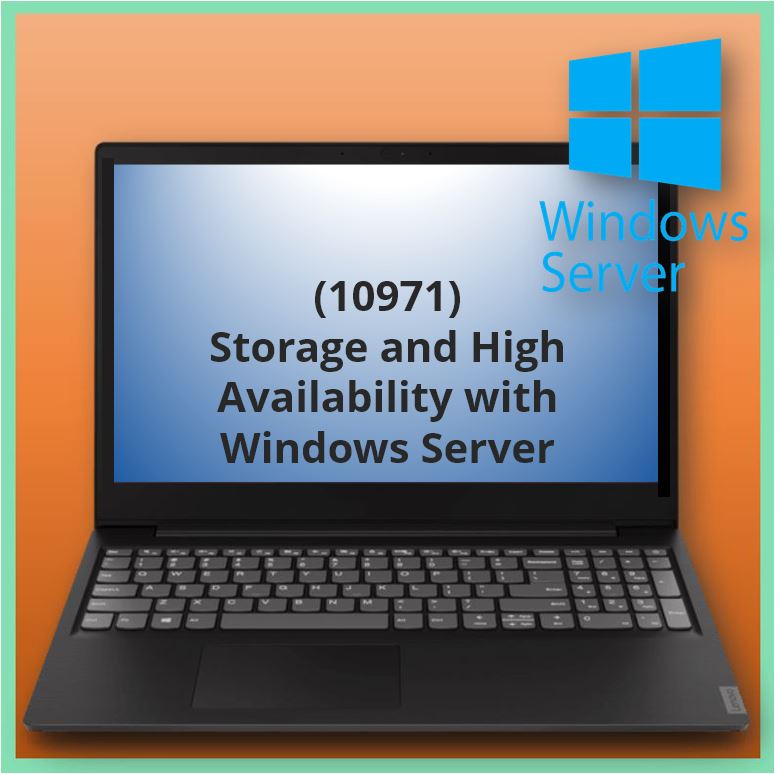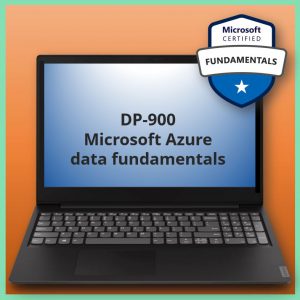Aangeboden leervormen


Storage and High Availability with Windows Server (10971)
In this course, you will learn about traditional storage topologies such as Direct Attached Storage (DAS), Network Attached Storage (NAS), Storage Area Networks (SANs), and bus technologies such as Fibre Channel and Internet SCSI (iSCSI). The course will also cover the latest innovations concerning disks, volumes and file systems as well as new technologies such as Storage Spaces, tiering, thin provisioning and Data Deduplication, and enhanced functionality to SMB and NFS sharing protocols in Windows Server 2012 R2.
The course will also cover high availability and disaster recovery technologies such as live migration, storage migration and Hyper-V Replica, as well as providing in-depth coverage of failover clustering including a detailed implementation of failover clustering of Hyper-V using Scale-Out File Server (SoFS).
The course also covers System Center 2012 R2 Virtual Machine Manager and you will learn how to manage your storage infrastructure at scale by abstracting the physical storage fabric into manageable units that can be provisioned on an on-demand basis with minimal overhead by using private clouds. The course describes Microsoft Azure storage solutions and integrating your on-premise storage with cloud-based storage and disaster recovery solutions including StorSimple and Hyper-V Recovery Manager. The course covers implementing Network Load Balancing (NLB) and load balancing clusters.
The detailed hands-on labs and in-depth content will provide you with the knowledge and skills so you can meet and manage your continually growing and evolving storage and high availability needs with reduced overhead and cost.
At Course Completion
After completing this course, students will be able to:
• Manage and secure disks and volumes in Windows Server.
• Describe storage technologies and components in Windows Server.
• Implement and manage Storage Spaces and Data Deduplication.
• Describe high availability and disaster recovery with Hyper-V virtual machines and high availability with failover clustering in windows Server 2012.
• Plan and implement a failover cluster.
• Describe managing server roles and clustering resources.
• Implement and manage virtual machines by using Hyper-V with failover clustering.
• Describe using System Center 2012 R2 Virtual Machine Manager to perform storage infrastructure management.
• Describe cloud-based storage and high availability solutions.
• Plan and implement a Network Load Balancing (NLB) cluster.
Voor wie
This course is intended for experienced IT Professionals who have the following experience and background:
• IT professionals with real-world experience who work in an enterprise environment and who are involved in storage and high availability management and provisioning, and who are looking to gain knowledge and training on the latest technologies in those areas in Windows Server 2012 and Windows Server 2012 R2.
• IT professionals with real-world experience who work in a Windows Server 2008 environment and want to assess the latest storage and technologies that are available in Windows Server 2012 and Windows Server 2012 R2.
• IT Professionals who work in small-to-medium enterprises who manage storage and high availability requirements for their organization.
• IT professionals who have skills in other areas, such as general system administration, who are looking for knowledge and skills for career development in Windows Server storage and high availability.
Programma
Module 1: Disks and Volumes with Windows Server
This module covers the configuration and management of disks and volumes focusing on changes and enhancements to existing technologies in Windows Server 2012 and Windows Server 2012 R2. It also discusses how and when to use EFS (Encrypting File System) and BitLocker, which enable you to secure data at rest.
Lessons
· Managing Disks in Windows Server
· Managing Volumes in Windows Server
· Securing Volumes and Drives
Lab : Managing Disks and Volumes in Windows Server 2012
· Create and Manage Virtual Hard Disks by Using Windows PowerShell
· Convert Virtual Hard Disks From a .vhd Format to a .vhdx Format
· Resize a Volume
· Enable BitLocker to Secure a Drive
After completing this module, students will be able to:
· Explain how to manage drives in Windows Server 2012
· Explain how to manage volumes in Windows Server 2012
· Explain how to implement data security by using EFS, a Trusted Platform Module (TPM), and BitLocker.
Module 2: Fundamental Storage Technologies and Components
This module describes various fundamental storage technologies and components, including storage topology options, bus technologies in Windows Server, and sharing configuration in Windows Server.
Lessons
· Storage Topology Options
· Configuring Bus Technologies in Windows Server
· Configuring Sharing in Windows Server
Lab : Planning and Configuring Storage Technologies and Components
· Plan Storage Requirements
· Configuring iSCSI Storage
· Configure and Manage Share Infrastructure
After completing this module, students will be able to:
· Describe DAS, NAS, and SAN topologies.
· Understand and configure bus technologies including NIC Teaming, HBAs, Converged networking, Fibre channel, FCoE, iSCSI, MPIO, Data Centre Bridging, and Windows Storage Server.
· Describe storage protocols including NFS and SMB, block-level and file-level storage, and Windows Storage Server.
Module 3: Implementing Storage Spaces and Data Deduplication
This module discusses how to manage, maintain, and recover Storage Spaces, how to configure storage pools and virtual hard disks, and how to implement Data Deduplication.
Lessons
· Implementing Storage Spaces
· Maintaining Storage Spaces
· Implementing Data Deduplication
Lab : Implementing Storage Spaces
· Create a Storage Space
· Enable and Configure Storage Tiering
Lab : Implementing Data Deduplication
· Install Data Deduplication
· Configure Data Deduplication
After completing this module, students will be able to:
· Describe and implement Storage Spaces and Storage Spaces features.
· Describe how to maintain Storage Spaces.
· Describe how to implement Data Deduplication.
Module 4: High Availability in Windows Server
This module initially covers high availability in Windows Server in general terms, such as defining levels of availability and disaster recovery options and requirements. It then covers High Availability options which are available for virtual machines outside of failover clustering and follows that then by specifically covering High Availability as provided by failover clustering.
Lessons
· Defining Levels of Availability
· High Availability and Disaster Recovery Solutions with Hyper-V Virtual Machines
· High Availability with Failover Clustering in Windows Server 2012
Lab : Planning and Configuring High Availability and Disaster Recovery Solutions
· Determine an Appropriate High Availability and Disaster Recovery Solution
· Implement Storage Migration
· Implement Hyper-V Replica
After completing this module, students will be able to:
· Describe levels of availability.
· Describe high availability and disaster recovery solutions with Hyper-V virtual machines with technologies such as live migration, storage migration, and Hyper-V Replica.
· Describe high availability as provided by failover clustering in Windows Server 2012 and Windows Server 2012 R2.
Module 5: Implementing Failover Clustering
This module explains how to create and administer a failover cluster, including planning, creating, managing, and monitoring a cluster.
Lessons
· Planning a Failover Cluster
· Creating a New Failover Cluster
Lab : Creating and Administering a Cluster
· Create a failover cluster
· Verify Quorum settings and add a node
· Evict a node and verify Quorum settings
· Configure Quorum from Disk Witness to File Share Witness and Define Node Voting
· Add Disk to and Remove Disks From the Cluster
After completing this module, students will be able to:
· Plan a failover cluster.
· Create a failover cluster.
· Manage and monitor a failover cluster.
Module 6: Managing Server Roles and Clustering Resources
This module describes how to configure roles and services for high availability on a failover cluster, how to manage and maintain a failover cluster, and how to implement site high availability with multi-site failover clustering.
Lessons
· Configuring High Availability Applications and Services on a Failover Cluster
· Managing and Maintaining a Failover Cluster
· Troubleshooting a Failover Cluster
· Implementing Site High Availability with Multi-site Failover Clustering
Lab : Managing Server Roles and Clustering Resources
· Prepare For and Create a Failover Cluster by Using Windows PowerShell
· Implement Storage Spaces with Failover Clustering
· Add the General File Server Role and Create Data
· Verify High Availability Functionality
· Securing Cluster Shared Volumes with BitLocker Drive Encryption
· Configure Cluster Aware Updating
After completing this module, students will be able to:
· Describe configuring roles and services for high availability on a failover cluster.
· Describe managing and maintaining a failover cluster.
· Describe troubleshooting a failover cluster.
· Describe implementing site high availability with multi-site failover clustering.
Module 7: Implementing Failover Clustering with Hyper-V
This module gives an overview of Hyper-V and failover clustering integration, as well as Implementing Hyper-V failover Clustering with Scale-Out File Server (SoFS). It also covers the management and maintenance of Hyper-V virtual machines on failover clusters.
Lessons
· Overview of Integrating Hyper-V with Failover Clustering
· Implementing Hyper-V with Failover Clustering
· Managing and Maintaining Hyper-V Virtual Machines on Failover Clusters
Lab : Implementing Failover Clustering by Using Hyper-V
· Create a Hyper-V Application Cluster
· Create a SoFS Storage Guest Cluster with Shared Virtual Hard Disk
· Migrate virtual Machine Virtual Hard Disks to SoFS Storage Guest Cluster
· Validate Storage Guest Cluster Functionality
· Perform Live Migration of Guest Clustered Virtual Machines
After completing this module, students will be able to:
· Describe Hyper-V and failover clustering integration.
· Describe how to implement Hyper-V with failover clustering and Scale-Out File Server (SoFS).
· Describe the process of managing and maintaining Hyper-V virtual machines on failover clusters.
Module 8: Storage Infrastructure Management with Virtual Machine Manager
This module describes Virtual Machine Manager and how to use it to manage storage infrastructure. It also discusses using System Center 2012 R2 Virtual Machine Manager to provision failover clusters for Hyper-V.
Lessons
· Overview of Virtual Machine Manager
· Managing Storage Infrastructure with Virtual Machine Manager
· Provisioning Failover Cluster in System Center 2012 R2 Virtual Machine Manager
Lab : Storage Infrastructure Management with Virtual Machine Manager
· Configure and Provision Storage Infrastructure Components
· Add Storage to Virtual Machine Manager
· Create SoFS Storage Cluster
After completing this module, students will be able to:
· Describe Virtual Machine Manager.
· Manage storage infrastructure with Virtual Machine Manager.
· Provision a failover cluster in System Center 2012 R2 Virtual Machine Manager.
Module 9: Cloud Based Storage and High Availability
This module discusses cloud-based storage and high availability solutions, including Azure, StorSimple, and disaster recovery with Hyper-V Recovery Manager.
Lessons
· Microsoft Azure Storage Solutions and Infrastructure
· Cloud Integrated Storage with StorSimple
· Disaster Recovery with Hyper-V Recovery Manager
Lab : Cloud Based Storage and High Availability
· Asses Options for A. Datum’s Future Storage and Service Needs
· Optional Exercise: Configure Azure Storage
· Optional Exercise: Configure Azure Virtual Machines
· Optional Exercise: Manage Azure Storage and Virtual Machines by Using Windows PowerShell
After completing this module, students will be able to:
· Describe Microsoft Azure StorageSolutions and Infrastructure.
· Describe Cloud Integrated Storage with StorSimple.
· Describe Disaster Recovery with Hyper-V Recovery Manager.
Module 10: Implementing Network Load Balancing Clusters
This module introduces Network Load Balancing (NLB) and the situations for which NLB is appropriate. It also covers how to configure and manage NLB clusters, perform maintenance tasks on NLB clusters, and how load balancing works in System Center 2012 R2 Virtual Machine Manager and Microsoft Azure.
Lessons
· Overview of NLB
· Configuring an NLB Cluster
· Planning an NLB Implementation
Lab : Implementing a Network Load Balancing Cluster
· Implementing an NLB Cluster
· Configuring and Managing the NLB Cluster
· Validating High Availability for the NLB Cluster
After completing this module, students will be able to:
· Describe NLB.
· Explain how to configure an NLB cluster.
· Explain how to plan an NLB implementation.
Voorkennis
Before Attending this course, students must have:
• Knowledge and real world experience working day to day with Windows Server and Windows Client in an Enterprise environment.
• Knowledge of and experience with basic local storage concepts and technologies.
• Experience working with Windows Server 2012 or Windows Server 2012 R2 (this is beneficial but not essential).
Examen
Duur training
Klassikaal: 4 dagen
Open leercentrum: 4 dagen








